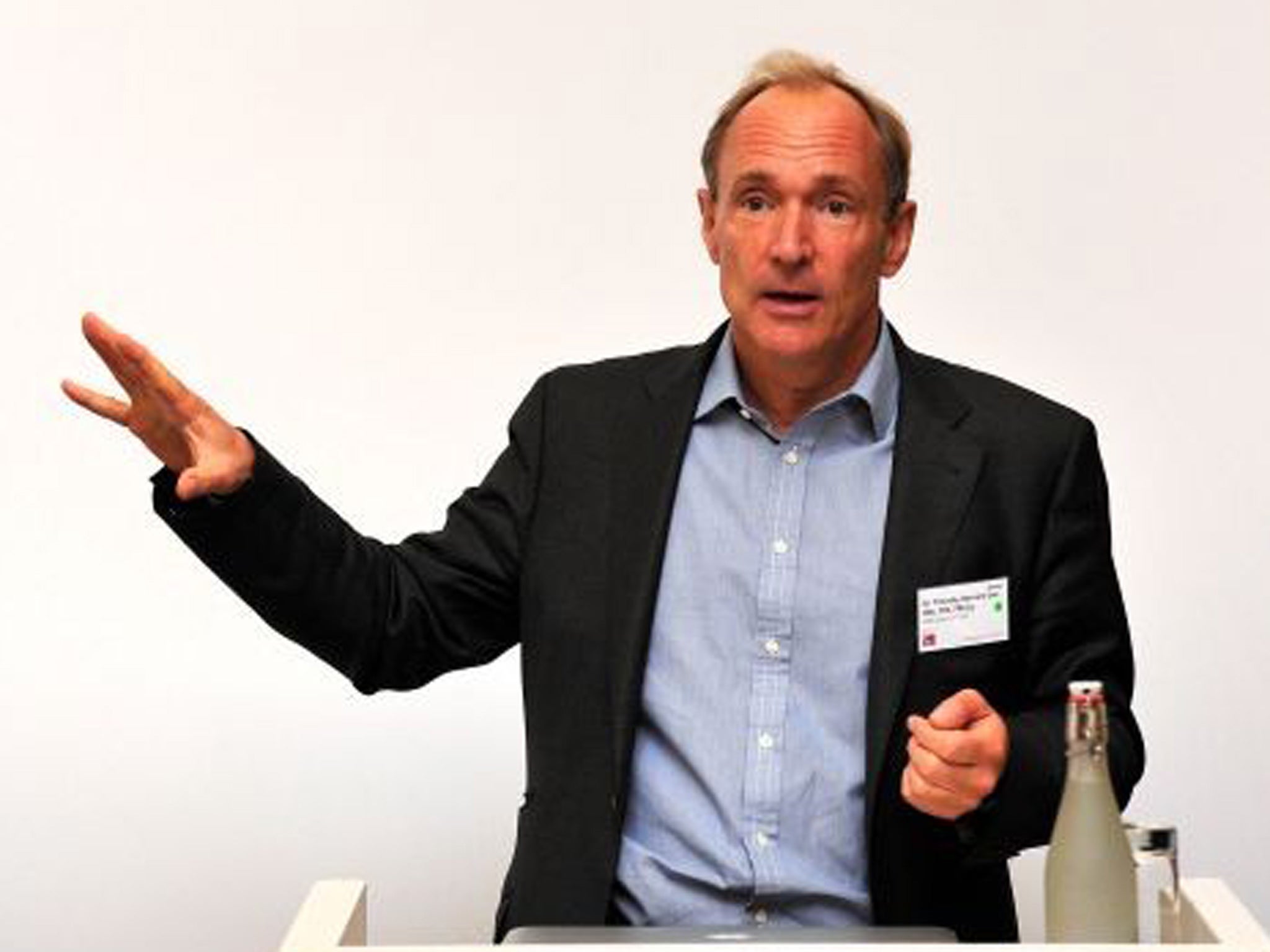
Your support helps us to tell the story
From reproductive rights to climate change to Big Tech, The Independent is on the ground when the story is developing. Whether it's investigating the financials of Elon Musk's pro-Trump PAC or producing our latest documentary, 'The A Word', which shines a light on the American women fighting for reproductive rights, we know how important it is to parse out the facts from the messaging.
At such a critical moment in US history, we need reporters on the ground. Your donation allows us to keep sending journalists to speak to both sides of the story.
The Independent is trusted by Americans across the entire political spectrum. And unlike many other quality news outlets, we choose not to lock Americans out of our reporting and analysis with paywalls. We believe quality journalism should be available to everyone, paid for by those who can afford it.
Your support makes all the difference.Hold the phone. That’s the founding father of the web…
Correct. Sir Tim Berners-Lee is the brains behind the World Wide Web, which was dreamed into existence 25 years ago. It was March 1989 that the software engineer wrote a paper for the European Organisation for Nuclear Research. It proposed the idea of a database that connected users with software reliant on hypertext, a (then) clunky code that had been around since the 1960s.
How did that go down?
With mixed responses. His supervisor scrawled the words “vague but exciting” on the cover of the first proposal. But he launched it nonetheless naming the first version the World Wide Web after rejecting other name such as the Information Mine. Early critics included the writer Douglas Adams, who pointed out that ‘WWW’ was the only set of initials that took longer to say than the thing it was supposed to represent.
Hang on. World Wide Web? Internet? Which is it?
OK, let’s be clear. It’s a commonly assumed that the two terms are synonymous. They’re not. The web is a portion of the internet, albeit a large portion.
The internet provides the underlying structure. The web has been the fastest growing communication medium of all time. It took broadcast radio 38 years to reach its first 50 million users and television 13 years. The web got there in just four.
Berners-Lee. What a man.
Quite. Mild-mannered, shy and often very humble about his achievements. The Queen likes him too. In 2004 she knighted him, and Danny Boyle featured him in the 2012 Olympic opening ceremony.
But unlike Mark Zuckerberg and co, how come we never see him?
He’s busy and publicity shy. Sir Tim, who is originally from London now splits his time between the UK and the US. He is the director of the World Wide Web Consortium, which oversees the web’s continued development and is also the founder of the World Wide Web Foundation and a director of the Web Science Research Initiative.
Where to from here?
The web we use today is dramatically different from the one that Sir Tim unveiled 25 years ago. It has rapidly evolved and continues to grow and change. We are edging ever closer now to achieving Sir Tim’s vision of a fully semantic entity, a place where computer programs “are capable of analysing all the data on the web”. Today he said: “The web’s billions of users are what have made it great. I hope that many of them will join me in celebrating this important milestone.
He added: “I believe we can build a web that truly is for everyone: one that is accessible to all, from any device, and one that empowers all of us to achieve our dignity, rights and potential as humans."
Join our commenting forum
Join thought-provoking conversations, follow other Independent readers and see their replies
Comments